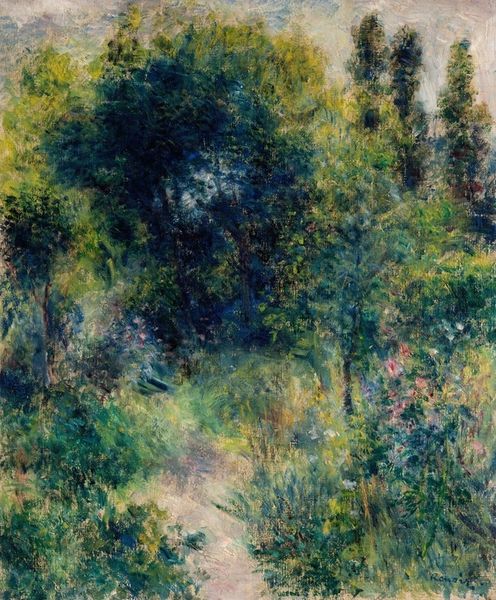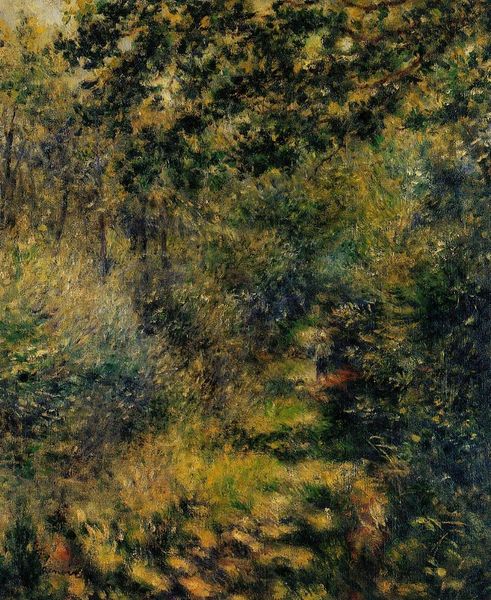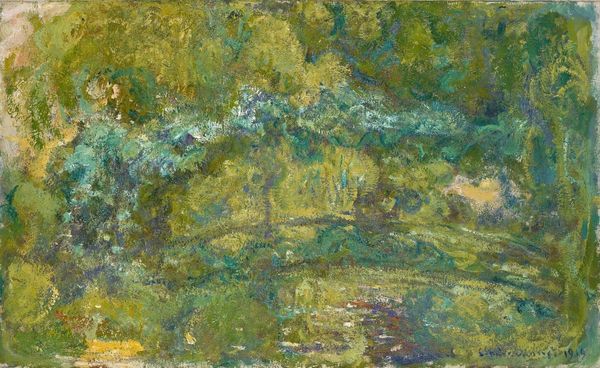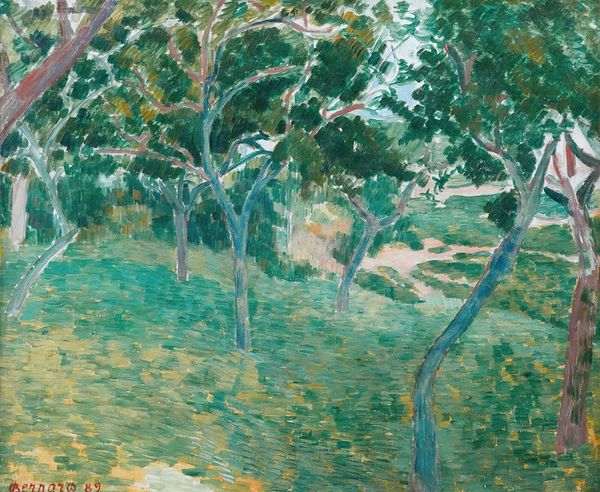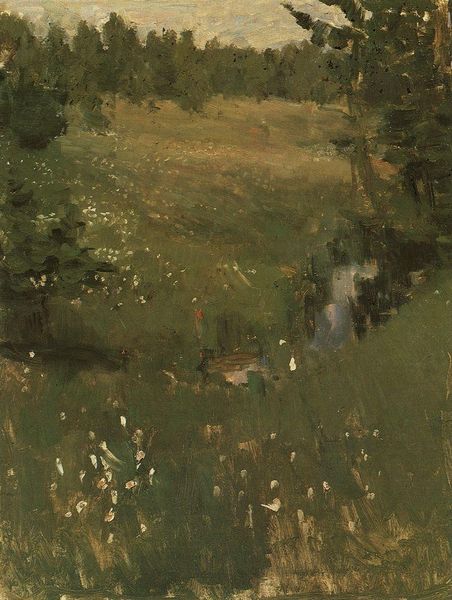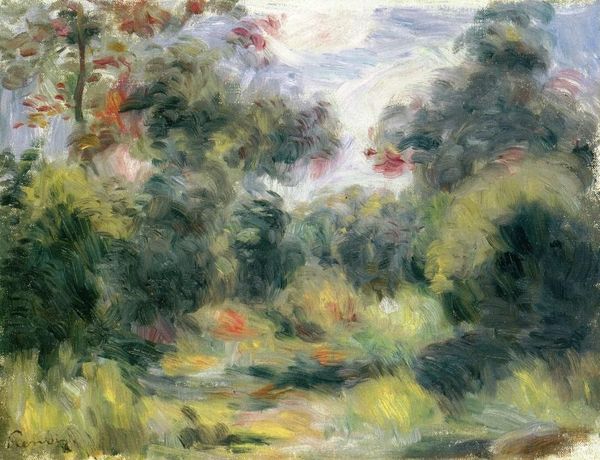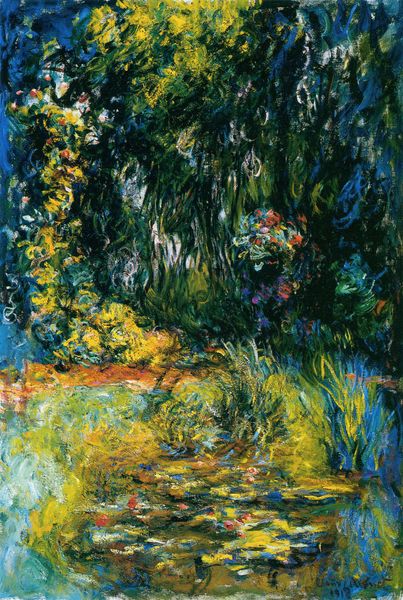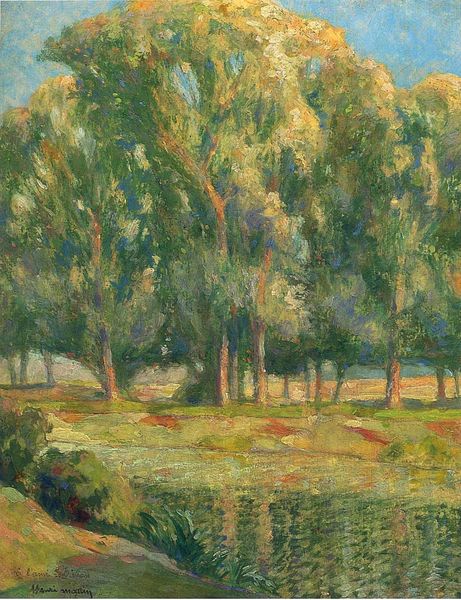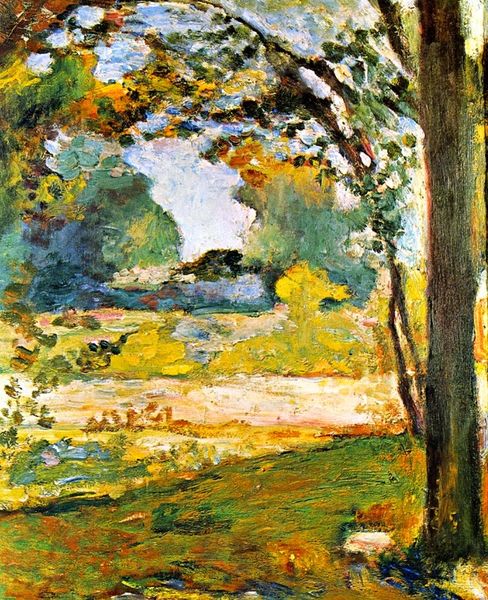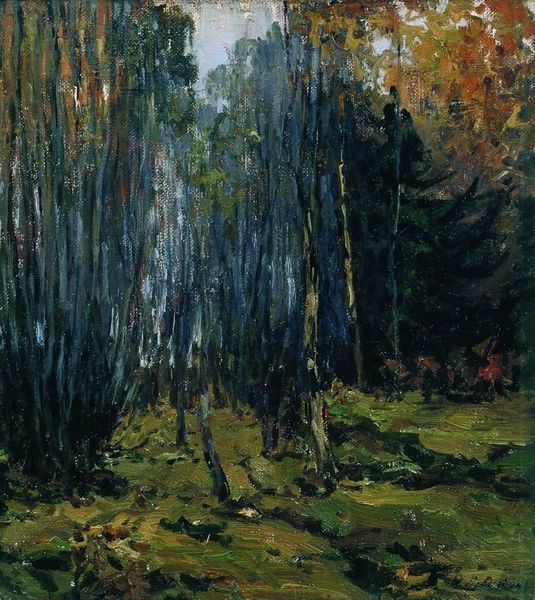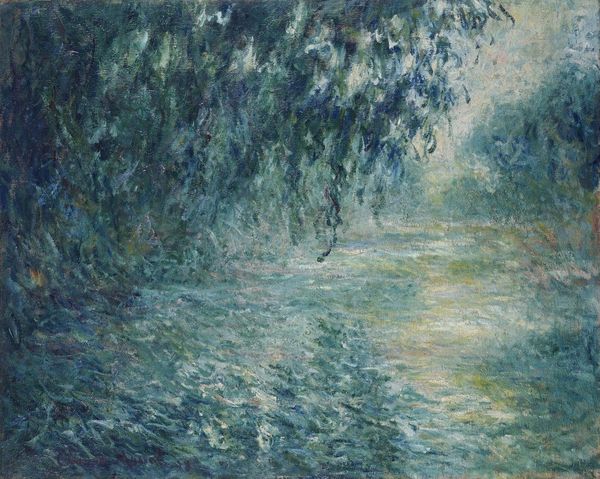
painting, plein-air, oil-paint
#
tree
#
painting
#
impressionism
#
plein-air
#
oil-paint
#
landscape
#
impressionist landscape
#
form
#
france
#
paint stroke
#
line
#
cityscape
#
realism
Copyright: Public domain
Curator: Let's take a closer look at Berthe Morisot's "Willows in the Garden at Bougival," painted in 1884. It's currently held in a private collection. Editor: Immediately, I'm struck by the sense of lightness and transience. The colors seem to vibrate on the canvas, capturing a fleeting moment in time. There’s also this incredible contrast between structure and dissolution... what am I really looking at? Curator: It's interesting you pick up on that sense of ambiguity. As an Impressionist, Morisot was deeply engaged in representing modern life. She focused especially on the domestic sphere, which had significant implications for women of her era, who were challenging prescribed roles and behaviors. One might argue the dissolving form itself can be read as resisting clear categorization... gendered or otherwise. Editor: I can see that. The blurring of forms also connects to ideas of memory and emotion, doesn’t it? Willows themselves are laden with symbolic meaning, often associated with mourning and lost love. Here, they seem to stand sentinel over the garden, witnesses to the passage of time. Curator: Indeed, the willows certainly contribute to that atmospheric quality. And the 'en plein air' approach - painting outdoors - it gave her an ability to really capture the light and color, creating what many described as a 'feminine' sensibility...though of course those kinds of descriptors often reflect societal biases. Editor: I agree; the language of feminine sensibility imposes limitations. I think what draws me is the psychological weight, almost a quiet introspection despite the ostensibly lighthearted subject matter of a garden. Notice how the staccato brushstrokes and high-key colors do anything but resolve a sense of unrest and incompleteness in both foreground and background forms. Curator: That’s a compelling point. Rather than offering a harmonious view, the garden appears fragmented, reflective of a reality experienced perhaps from an interior perspective rather than a panoramic one, something to be deconstructed rather than simply taken in. Editor: Exactly! What do you make of her technique regarding color value relationships and composition? There is this sense of the unseen at play that moves away from merely conveying visible attributes and closer to imbuing her landscape with personal emotional responses...a new way of landscape as a metaphor perhaps. Curator: It pushes landscape conventions and constraints of what women artists were "expected" to create. Editor: Agreed! So, the painting becomes not just a representation of a garden, but a layered exploration of perception, emotion, and identity in a time of cultural transition. It speaks to the complexity of lived experience, then and now. Curator: It truly invites ongoing dialogue around representation, gender and impressionist technique!
Comments
No comments
Be the first to comment and join the conversation on the ultimate creative platform.

